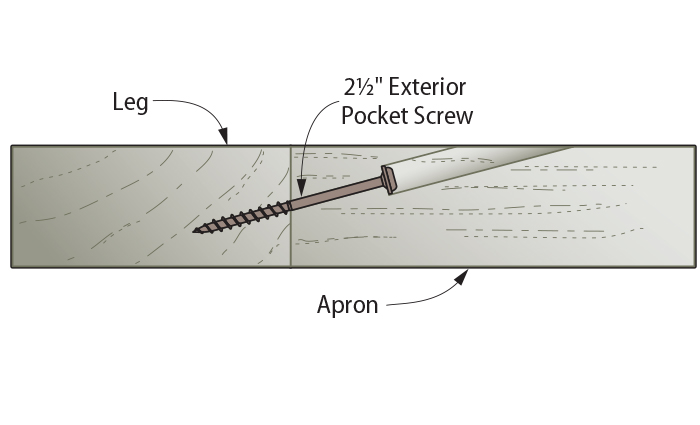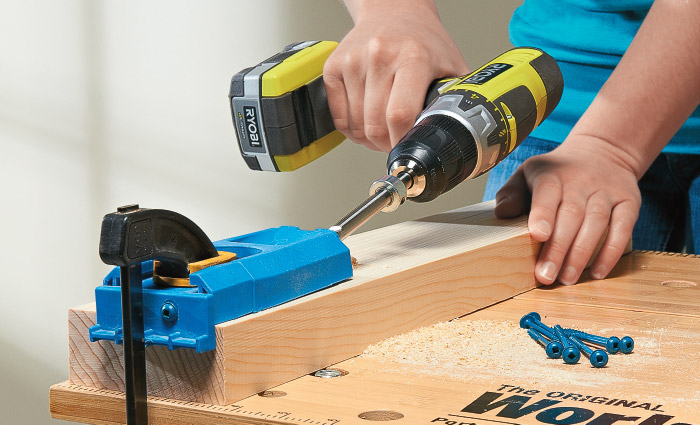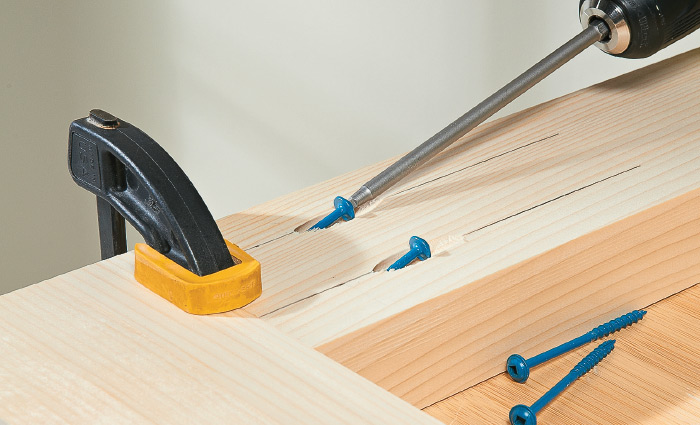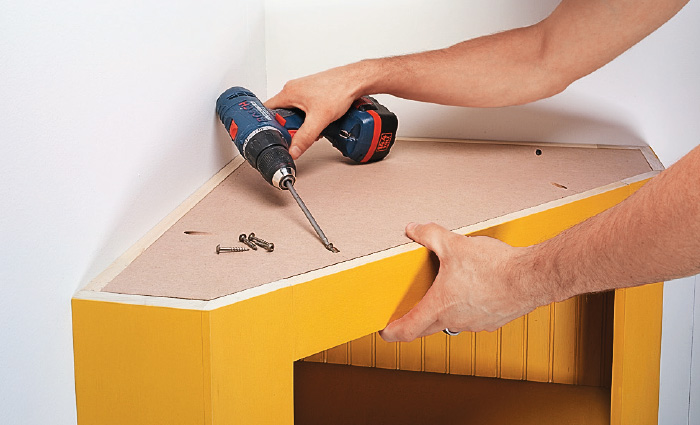
One of the simplest ways to join two boards together is with a pocket-hole joint. This type of joint is easy enough for even a beginner to use, and creates strong, solid connections.
Pocket Hole 101. A pocket hole is basically an angled hole that is drilled in a board. Driving a screw at an angle through that hole and into a board butted against it creates the connection between the two. This illustration shows an example of a pocket-hole joint.

To make a pocket-hole joint, you need a pocket-hole jig, a drill bit, and pocket screws. These are sold as a kit at many home centers. Set the jig, and drill the hole or holes in one piece.

Next, clamp the two project pieces together where you want to join them. Drive the right-size screws through the holes and into the mating pieces. The blue pocket screws shown here are designed for use in outdoor projects.

Pocket-hole joints are useful for a variety of applications, such as attaching panels to the frame of a cabinet as shown here. You can even purchase wood pocket-hole plugs, which can be sanded flush and painted or stained.